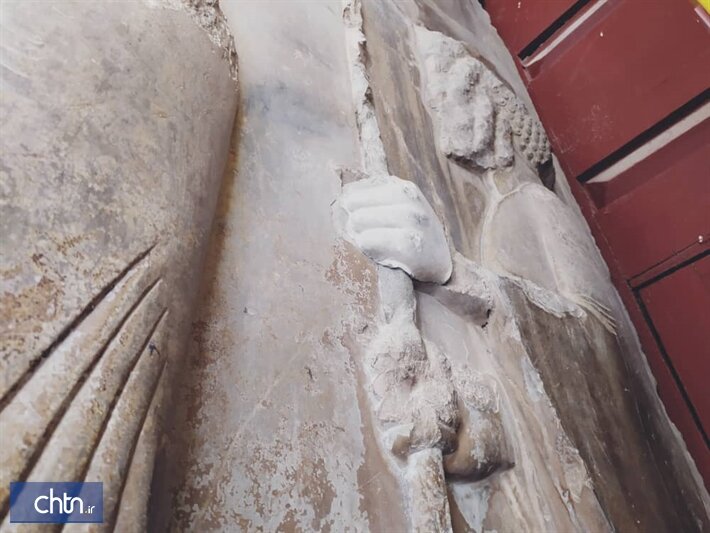“Hand of Achaemenid soldier” attached to bas-relief in Persepolis

TEHRAN – The left hand of a huge Achaemenid-era (c. 550 - 330 BC) bas-relief carving, depicting a soldier grabbing a spear, has recently been attached to the rock-carved art after decades in the UNESCO-registered Persepolis, southern Iran.
“By providing the possibility of better protection of this bas-relief through the design and installation of a glass protector, it became possible to re-install the separated piece of stone [hand-shaped portion] in its original place,” CHTN quoted Hamid Fadaei, director of the World Heritage site, as saying on Monday.
“The bas-relief of this Achaemenid spearman, which is attached on the wall of the Queen’s Palace, now one of the entrances to the Persepolis Museum, had been separated from its place since the 1960s and was kept in the treasury of the Persepolis Museum for years,” Fadaei explained.
Persepolis, also known as Takht-e Jamshid, whose magnificent ruins rest at the foot of Kuh-e Rahmat (Mountain of Mercy), was the ceremonial capital of the Achaemenid Empire. It is situated 60 kilometers northeast of the city of Shiraz in Fars Province.
The royal city of Persepolis ranks among the archaeological sites which have no equivalent, considering its unique architecture, urban planning, construction technology, and art. The city’s immense terrace was begun about 518 BC by Darius the Great, the Achaemenid Empire’s king. On this terrace, successive kings erected a series of architecturally stunning palatial buildings, among them the massive Apadana palace and the Throne Hall (“Hundred-Column Hall”).
This 13-ha ensemble of majestic approaches, monumental stairways, throne rooms (Apadana), reception rooms, and dependencies is classified among the world’s greatest archaeological sites.
AFM/MG
Leave a Comment